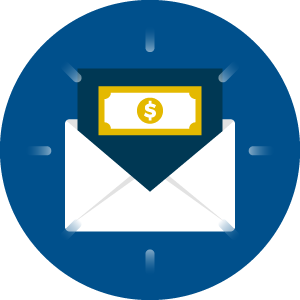
It’s incredible to look back just 10 years ago when digital magazines were still something of a novelty. Not everybody wanted to sell digital magazine subscriptions. Today, it’s a given that print publishers have some version of a digital edition of their magazine, either through a web edition or through online access to paywalled daily news content.
There are also publishing entrepreneurs who have launched from scratch with print, digital and website simultaneously. Even established brands in the retail space are creating their own magazines – multiplatform publishing run backward, so to speak.
However, even as they’ve become part of the norm, everyone is still trying to figure out subscription marketing and how to sell digital magazine apps and web magazines in this brave new world. Sometimes the newest and hottest ideas are just that – ideas. But today and always we’re focused on strategies that have actually been executed and demonstrated to work.
So here are 8 strategies we’ve compiled for selling digital magazine apps and web magazines, and as always, we welcome your ideas in the comments below.
[text_ad]
 How to sell digital magazines, Best Practice 1
How to sell digital magazines, Best Practice 1
Track device users
If you’re making even the smallest effort at online audience development, you’re getting a sizable number of unique visitors to your website. You should always identify those visitors who arrive on a mobile device, and deliver an ad with a digital subscription offer they can’t refuse. This will help you sell digital magazines in the future because you’ll have the benefit of data to guide your decisions.
How to sell digital magazines, Best Practice 2
Keep the whole pie
At Mequoda, we always build a web magazine subscription website as a companion to our publishing partners’ magazines. A web magazine looks and functions much like an app, but it’s web-based and responsive on all devices, so no app is necessary. Besides the obvious benefits of audience development, subscription websites for web magazines are vital in selling digital magazines, because you can do so directly from your website.
If you also have an app, take the money yourself. Send them to Apple for fulfillment, and you don’t owe Apple a dime. Why? Because Apple’s primary interest is selling iPads, and as long as your subscription website isn’t a competitor retail site, the company is happy.
Bonus: You get to gather the customer’s data, which Apple doesn’t willingly share and is a sore point for many publishers.
 How to sell digital magazines, Best Practice 3
How to sell digital magazines, Best Practice 3
Leverage your back issues
There’s gold in them thar archives! One of the biggest archives we know is offered by Scientific American. Their archive includes a couple hundred thousand articles dating back to the magazine’s first issue in August 1845 and including contributors such as Albert Einstein and Thomas Edison.
And while few publishers have an archive as old and rich as SA’s, most legacy publishers have older content that their subscribers would love to access. For instance, Mequoda publishing partner Biblical Archaeology Society (BAS) has digitized back issues of its current magazine, Biblical Archaeology Review, along with its retired titles, totaling over 7,000 articles spanning 40 years. Bundling that archive with the digital magazine (and leveraging decoy pricing) consistently delivers more sales and revenue than the digital magazine or the library alone.
BAS, by the way, combines Best Practice 2 with Best Practice 3 for a profitable two-fer!
 How to sell digital magazines, Best Practice 4
How to sell digital magazines, Best Practice 4
Practice Six Sigma subscription marketing
Launch a high-frequency Six Sigma email marketing program focused on selling more magazine subscriptions. For one client, we increased the number of magazine spotlights from the standard 2-3X per week to 5X per week and introduced editorially-driven creative to alternate between offer-driven creative. We saw a 70% increase in their NOPX (new orders per 10K email subscribers) from this program. To explain simply, we did this through methodological email testing. To hear the full strategy, read about how we manage Six Sigma marketing campaigns for our publishing partners.
While this approach is a significant amount of work, requiring active coordination between editorial and marketing, on-the-spot analytics, great copywriting, and interaction with fulfillment to manage the offers, we have seen it work and strongly recommend all publishers try it.
[text_ad]
 How to sell digital magazines, Best Practice 5
How to sell digital magazines, Best Practice 5
Start with a soft offer
Selling your magazine without a soft offer, like a free trial or a free incentive, is tough. We’ve seen hard offers work with low introductory prices, but at full price, selling these alone can be a hard way to make a living.
If your system has the capability to show low-priced introductory offers to non-buyers, you may find success with introductory discounts as deep as 75 to 80% which renew 12 months later to full price at normal conversion rates.
Start thinking about new ways you can begin subscription offer testing and how you’re going to leverage your editorial team and their expertise to craft intriguing copy specific to what the consumer will find in the current or archived issue of the magazine you’re promoting. Start coordinating with your fulfillment team to create different offer types to include free trials and monthly price points billed quarterly or bi-monthly. For more, read How to Use Six Sigma for Subscription Offer Testing.

How to sell digital magazines, Best Practice 6
Low-tech paper
There’s no excuse not to market to your existing print subscribers. Include a special offer for them when you send a renewal or billing notice— the cost is minimal.
How to sell digital magazines, Best Practice 7
All-access memberships
Even publishers with a single magazine have the opportunity to create overwhelming value if they sell a print, tablet and web edition with an archive, which would be considered three separate products. If you add up the cost that is clearly spelled out by offering each of these editions separately, you can create a value statement. If you offer a premium video product, or downloadable books, those are all different products as well. When we test an all-access offer and customers are given the option to subscribe to a magazine or become a member, without fail, the all-access membership is selected by 40% to as high as 95% of new members.

By creating an all-access bundle, you can add up the individual value of each item and tell prospective customers the full price of what’s included, and how much they’d save by purchasing the discounted all-access pass. That overwhelming value proposition helps you sell not only your magazine, but your whole product line for a higher price than the customer would have spent for a single subscription.
How to sell digital magazines, Best Practice 8
Promote them
This may seem like a no-brainer, but it’s shocking to us how many publishers (and we’re talking big players) have elaborate websites hosting subscription pages to build print circulation … but their digital products go unmentioned. On the platform where they’re most likely to find their tech-savvy readers! Don’t hide your digital editions under a barrel!
What about you? Have any tips or tricks we should include in this list? Selling digital magazines is an area where we could all use new ideas, and one that’s always evolving. Leave a comment with your thoughts.
This post was originally published in 2013 and is regularly updated.



I still don’t understand. How do i make my company’s magazine available on Apple newsstand?
Hi Emmanuel,
Apple doesn’t have a newsstand anymore, so you’ll need to create an app and submit it for approval to Apple. Here is Apple’s page on how to do that: https://developer.apple.com/library/content/documentation/IDEs/Conceptual/AppDistributionGuide/SubmittingYourApp/SubmittingYourApp.html
Amanda MacArthur
Managing Editor
Hi Dorian — Selling on a digital newsstand, whether Apple, Google or others, is selling an app, not a website. A gated website cannot be distributed through a newsstand and doesn’t need to be. Any device with a browser can get you to it.
Let me add to that question: … and even if it’s not an app, it can be gated behind registration (e.g., if you feed to the Apple News feed)? How does that work?
Wait, how can you use Apple for fulfillment for a subscription website that’s not an app?
Michelle — The Apple newsstand will certainly enable you to reach a wider audience — they won’t laugh at you — but you had better count on doing the marketing because you’re going not going to have Apple driving a lot of traffic to your magazine.
I write and edit a vintage magazine – digital of course, although prints can be ordered via our current only publisher, Joomag. Desperate to reach a wider audience and have looked at Apple and really want to make them the next big platform for us. However, a small company, it is a bit daunting, and none of us here are tech savvy. We are only a small magazine and wondered if Apple are basically going to laugh… help?
Thank you Marv. Given your size you’re unlikely to have to worry much about “structuring” a deal with Apple. The whole process is pretty well defined, from contrast terms to what you need to do. As we note in other posts on this site, Apple is the big player in digital newsstands, Kindle is a distant second, and Google Play an even more distant third. So, generally we recommend starting with Apple, adding Amazon Kindle, and then adding Google Play. There are others but those three are accounting for the vast majority of magazine app buyers.
I appreciate your reference to working with Apple/Newsstand.
I need more clarity as to how to structure that deal…Would also want to publish to other platforms, Nook, Kindle, etc.
I’ve build my Premiere issue, not released yet, in Apple’s iBook Author… (not optimum, but a familiar environment)
Magazine is: YourEARTH—YourFUTURE. (Covering everything we need to consider to survive as a species)
Do I still need to pay the $575 publishing fee and the $99 developer fee?
Abundant thanks,
Marv Lyons
Founder, Publisher, etc. etc.